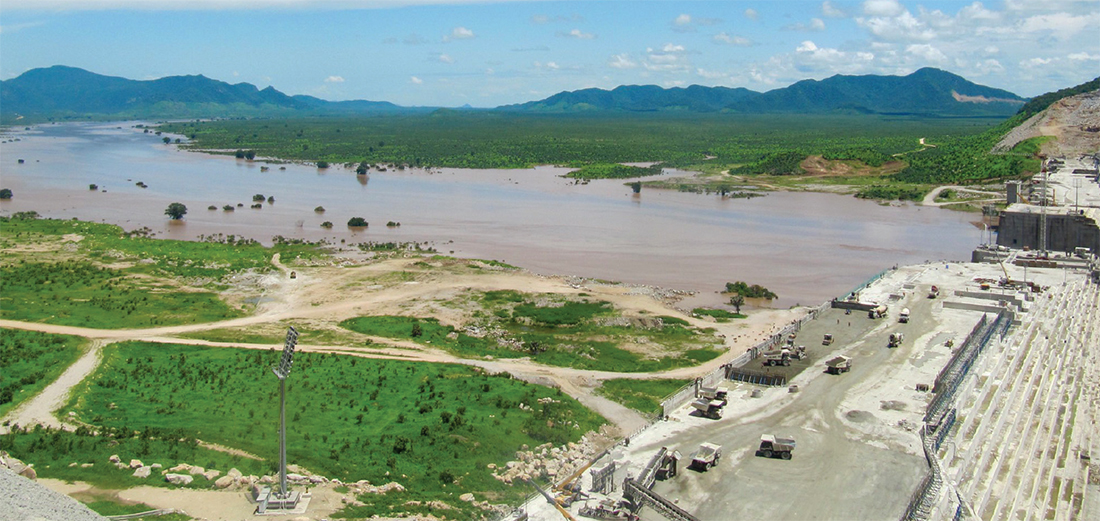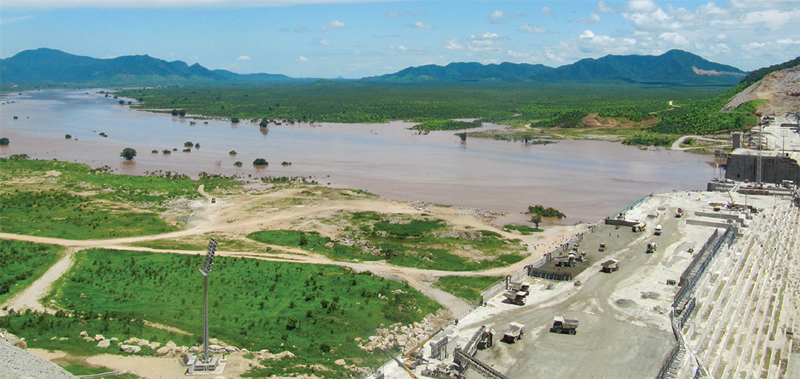
By Lucien Joppen
The Grand Ethiopian Renaissance Dam will be, once completed, the largest hydroelectric power plant in Africa and the seventh largest in the world.
The facility will add 6.45 GW to Ethiopia’s national grid and also reduce the carbon footprint of the African nation. The megaproject is also highly controversial as Egypt contests the project, stating it will limit its water supply from the Blue Nile.
The Grand Ethiopian Renaissance Dam (GERD) goes a while back, like most mega-projects. The eventual site (see map) for GERD was identified by the Unied States Bureau of Reclamation in the course of the Blue Nile survey, which was conducted between 1956 and 1964 during the reign of the Ethiopian emperor Haile Selassie. Due to the coup d’état of 1974, however, the project failed to progress. The Ethiopian Government surveyed the site in October 2009 and August 2010. In November 2010, a design for the dam was submitted.
On 31 March 2011, a day after the project was made public, a USD 4.8 billion contract was awarded without competitive bidding to the Italian company Salini Impregilo, and the dam’s foundation stone was laid on 2 April 2011 by the Ethiopian prime minister Meles Zenawi.
Changes in design
Meanwhile, the design for the gravity dam has changed several times between 2011 and 2017, affecting both the electrical and storage parameters. Originally, the hydropower plant was to receive fifteen generating units with 350 MW nameplate capacity each, resulting in a total installed capacity of 5,250 MW with an expected power generation of 15,128 GWh per year.
Its planned generation capacity was later increased to 6,000 MW, through 16 generating units with 375 MW nominal capacity each. The expected power generation was estimated at 15,692 GWh per year.
In 2017, the design was again changed to add another 450 MW for a total of 6,450 MW, with
a planned power generation of 16,153 GWh per year. That was achieved by upgrading 14 of the 16 generating units from 375 MW to 400 MW without changing the nominal capacity.


